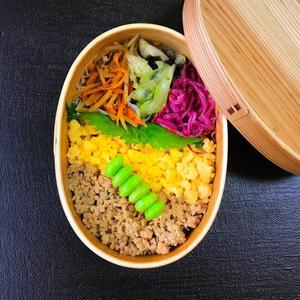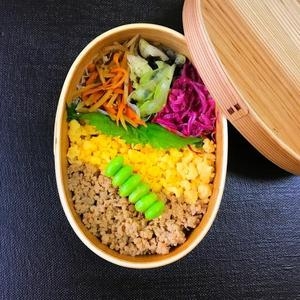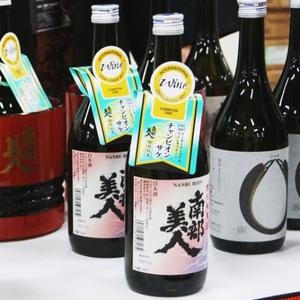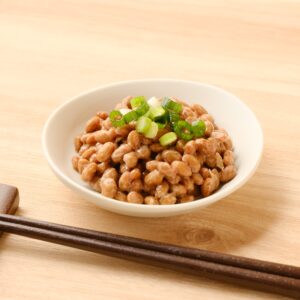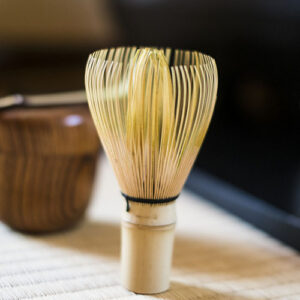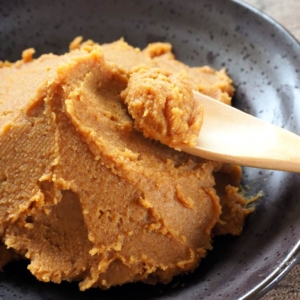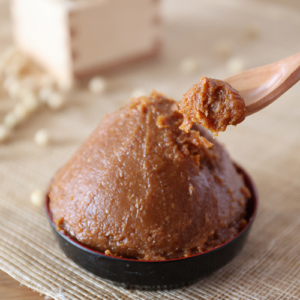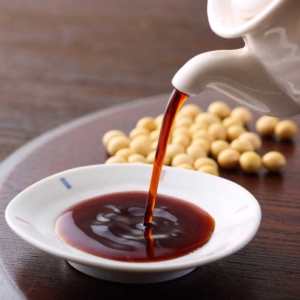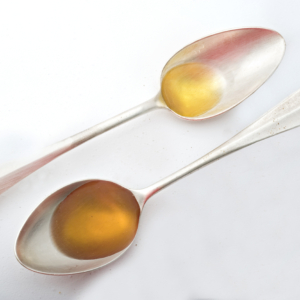A Glance Into the Inside and Out of the Bento Box
From the inside, bento box can have many different kind of looks which one might feel amazed, mesmerized and even charmed by it.
But at the same time, it is common for us to ask ourselves, is it necessary to make it look that way? So cute, funny and sometimes very luxury and classy.
These are all the things that often been ponder by people who live outside of Japan or who are not familiar with this culture.
And even for those who are familiar, but most likely could not brain or truly understand the underneath reason?
Apart from the surface, people also ponder about the inside of the Bento box. What to put inside the Bento box in order to have well balanced and nutritious Bento lunch box.
 Content List
Content List
- A Glance Into the Inside and Out of the Bento Box
- Definition of Bento box
- Bento from the inside
- The History of the Bento Box
- What the current culture says about the Bento?
- Secret Behind Colorful Bento
- Types of Bento Box
- Bento from the out
- Traditional Type
- The Cute, Minimalist and Current Innovation
- Choosing the right Bento box
- FAQ about Bento box
- Recommended Bento box Product
Glance into the inside and out of the Bento Box
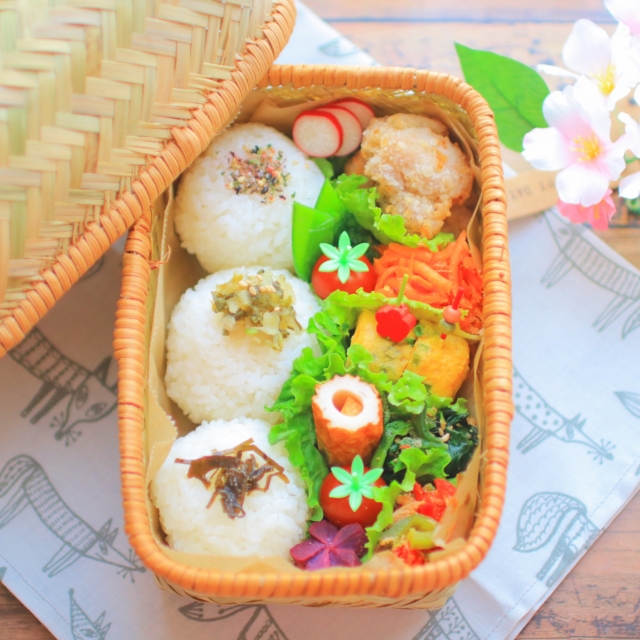
Definition of Bento
When answering the question of what is Bento box, from a glance the answer can be as simple as a lunch box to a single-portion boxed meal well balanced with nutrition and portable for school children and each white, pink and blue collar workers. From the inside, it also show how the bento maker’s feeling toward themselves or the one they are making for. On top of that, what lies beneath the maker’s feeling is based on the intangible culture of Japanese food.
Bento Box from the inside
From the healthy food culture to the heart of the makers
The History of the Bento Box
It started with the journey of miles away, the travelers begin to pack up their foods unto a Hakobento (boxed bento). Made from lacquered tinplate, this three-tiered container is being carried around the shoulder. The etymology of Bento derives from the word “Biandang” from the Southern Song, China which means convenient. Bento have a long standing history that evolved throughout time. It is said that the culture of using bento was first seen in the painting and poem from the Tales of Ise “Azumakudari no zu”.
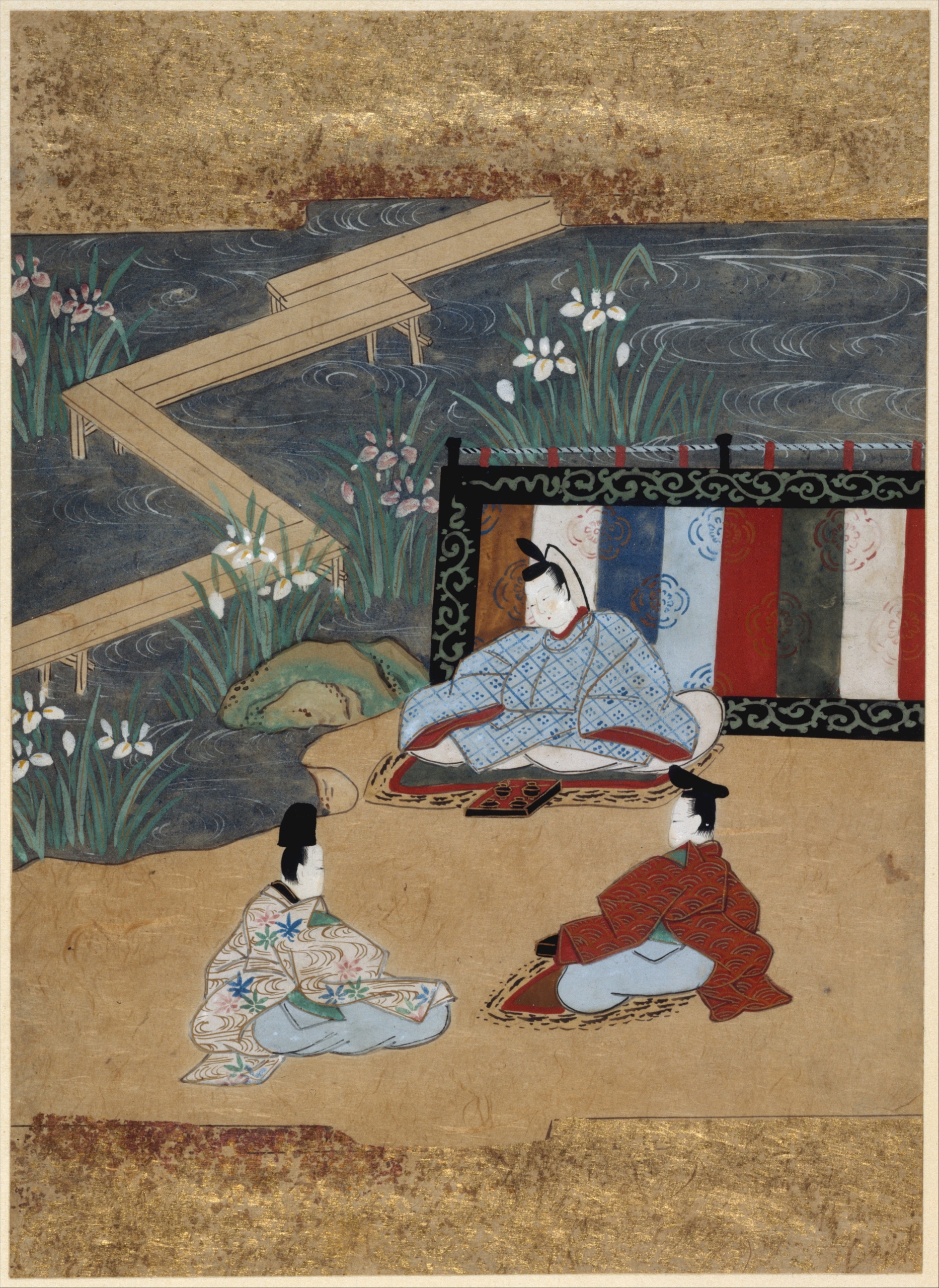
Kara ii no ue ni namida otoshite
– Tales of Ise “Azumakudari no zu
Literally meaning their tears fell onto their rice, soaking it.
During those early days, the rice use for the bento will be dried first, in order to have it last for a long time and will not get bad during the journey. The dried rice will then soaked with water before eaten. The tales of Ise existed from the Heian period which mean that bento have continue evolving for more than thousand years. Other said that, the culture of bento started can be seen from Nihon Shoki which is the beginning of Japan history.
What the current culture says about the Bento?
A way of communicating with the children
A site name soranews24.com frequently update about the popular stories floating in the SNS world regarding the bento box. Some of the stories are very touching and some are very funny and creative about how current people use bento for showing their love and a way of communication, especially between mothers and their schoolchildren. Working parent have lesser time to communicate with their children, making healthy and colorful bento early in the morning as a way of communicating and showing their love. They put so much effort on the compartment of the bento box to fill in all the nutrition needed by their children. Even sometime the making can last more than an hour.
Child’s lunch often says something about their social standing and home life
Indirectly, the parents’ hard work are shown when their children have good standing among the classmate. As bento is not only a pack of lunch but also a prove showing that the children is been brought up in a nice family. A part of that it is also a conversation starter among the classmate. While opposite of it, the children is said can feel lonely and have low self-esteem seeing how others have beautiful and cute bento. Though it is not intentionally how the bento culture expand into this view, but it is the nature of the children to like beautiful things and get excited about the food during the lunch.
Secret Behind Colorful Bento
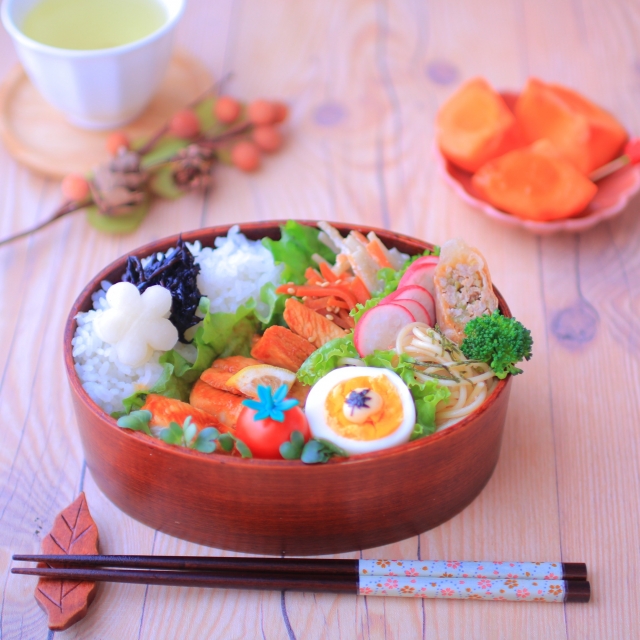
It is remarkable to see how Japanese cuisine has been added into UNESCO ‘intangible heritage’ list. The small compartment of the bento need to have a right portion of protein, carbs, vegetables, and fruits which is not an easy task. The holistic behind the healthful Japanese diet is because of Shojin Ryori. Shojin ryori, or Buddhist cuisine, that belief to bring balance and alignment to soul, mind, and body.
In this cuisine, there are 5 rules that need to be follow in term of appearance and taste of the food. The appearances need to have 5 colors of red, green, yellow, green, black, and white. Whereas for the flavor, salty, sweet, bitter, umami, and sour need to be balances with each other. This flavor comes naturally from the ingredients. The ingredients will be vary depending on the season. The balance in this 5 rules with ingredients will provide nutritional balance needed by the body to go through the changing season. This is the secret behind the colorful bento and the elegant Kaiseki (Multi-course Japanese dinner).
Types of Bento
Eki-ben
A bento box that can be found at the train station.
What’s special about this bento is each station have their own bento box design along with using local foods specialty as one of the dishes or can be the main dishes.
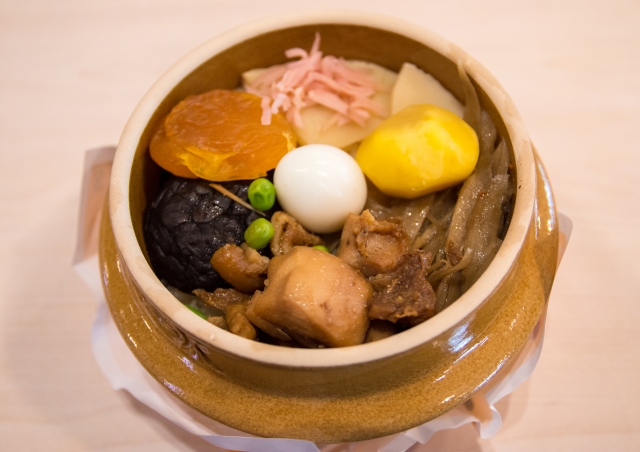
Makunouchi Bento
A bento given during the theater performance to be eaten in between the curtain (transition from one performance to another or from one scene to another scene).
Makunouchi bento started during the Edo period for the audiences who came to the play.
The play usually start from night till the morning, to keep the audiences awake during the curtain, bento were distribute.
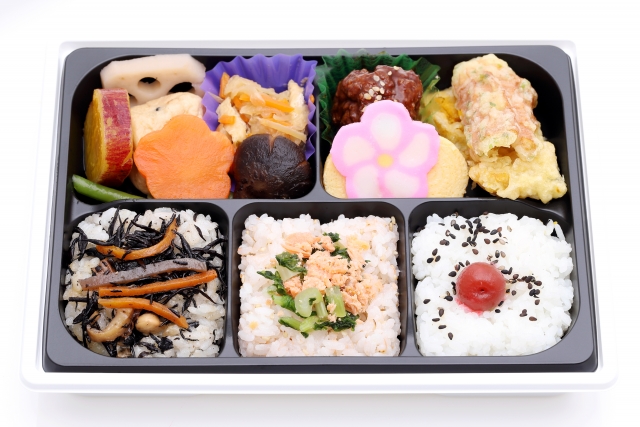
Aisai Bento
A bento made with love from the wife for the husband. It is almost the same as kyara ben, only with sweet and lovely design from the wife.
Put sweet message for the husband so that he flattered once he opened it during the lunch.
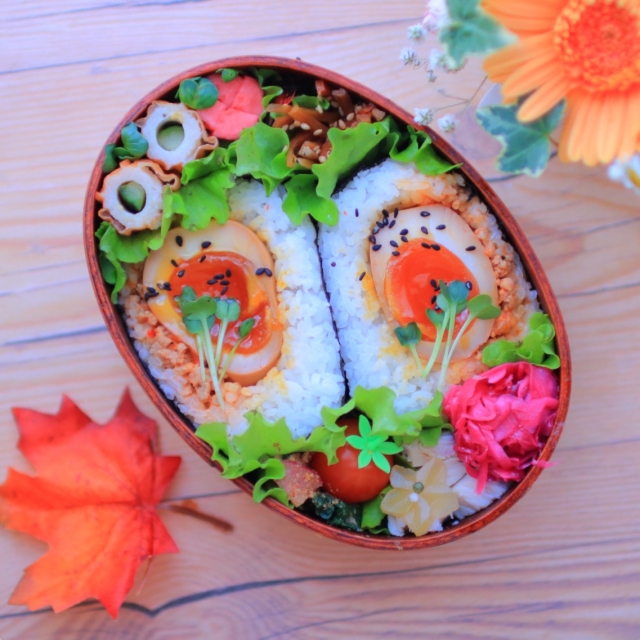
Kyara-ben
Indispensable item during the school life time. An item that give memories to the children. Some children are very picky about certain food.
Some children are very picky about certain food. Often the mother tried to go beyond expectation of the child, and made a bento box with manga or anime character. To bring the children appetite and eat till the last grain.
Currently, it is very popular in the SNS or social media.
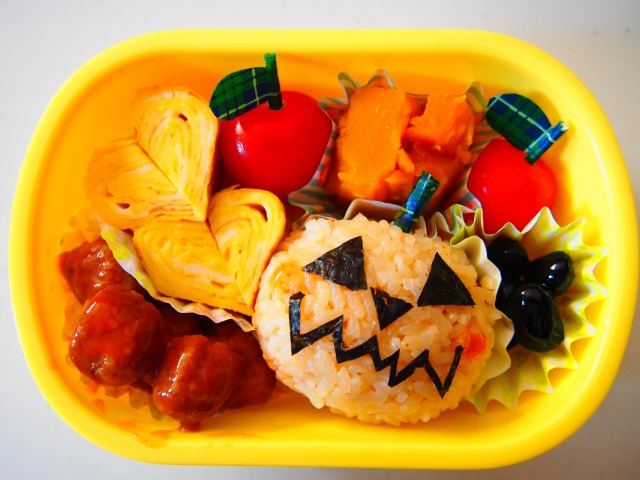
Koraku-ben
A large bento box comprises of many kinds of traditional Japanese dishes use for during special occasion of picnic such as Hanami viewing, cheering for the sport days.
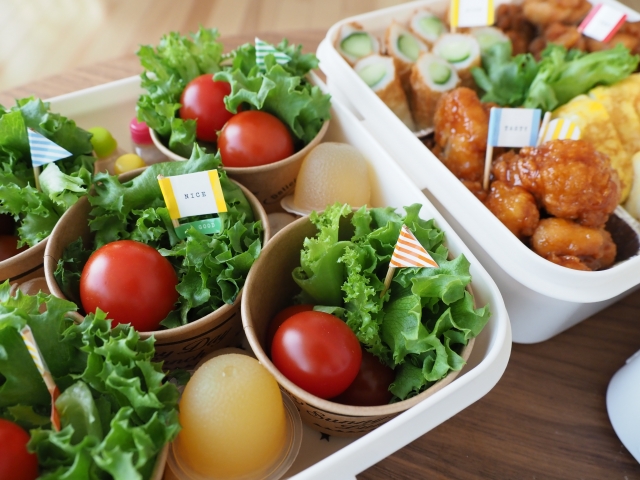
Hinomaru & Shikaeshi-ben
Hinomaru bento box is a bento box with only one umeboshi in the middle of the rice. It is said to be a traditional bento box.
Whereas Shikaeshi is the opposite of umeboshi, in where only small portion in the middle, with umeboshi outnumbered and surrounding the rice.
Shikaeshi is even called as a revenge bento box or way of showing anger and frustration from the maker to the acceptance.
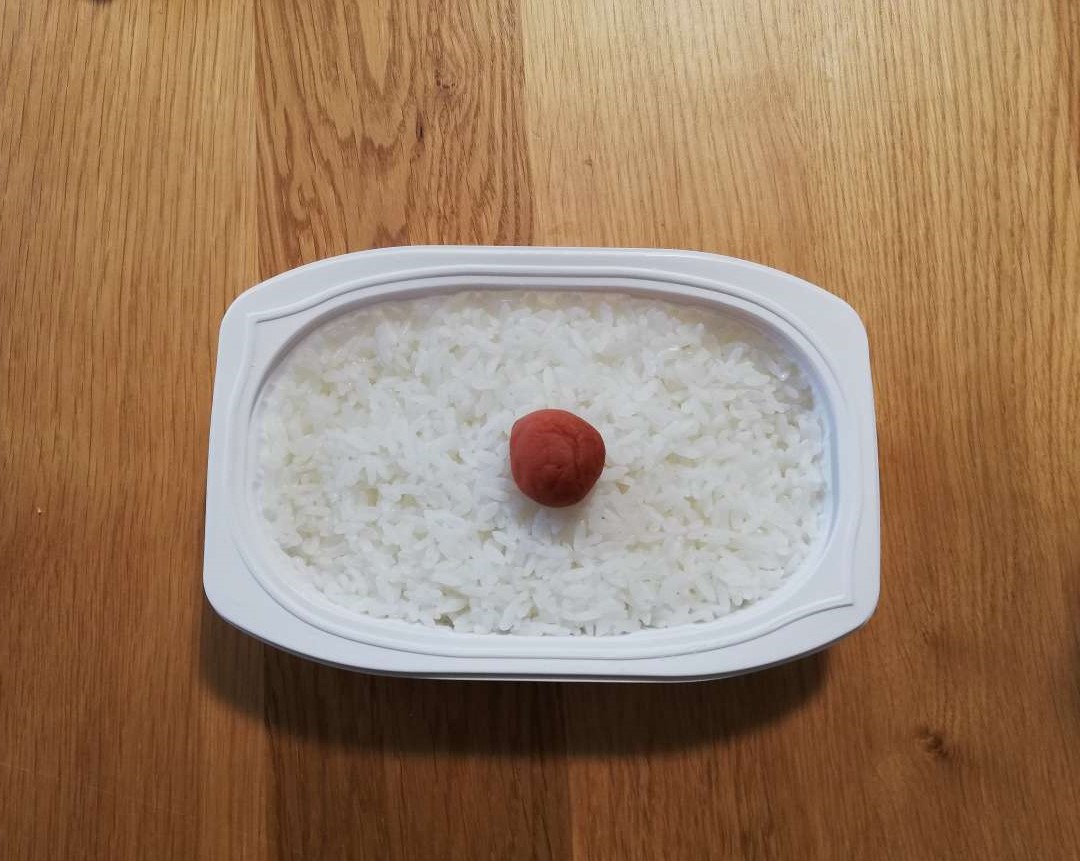
A daring yet subtle way of showing anger towards your love one.
The concept of bento makes the receiver or eater feel excited every time the lunch time arrived. Not knowing what inside the bento box, once can feel flatter, happy or opposite of it embarrassed and sad. It is something that can be look forward.
Bento Box from the outside
Materials and Designs The Traditional Types
Bento boxes are made of mostly wood such as cedar. After some time, lacquer arrived and gave smooth and shiny surface for the Bento box. And now there are stainless steel which give more strong and sturdy looks.
Lacquering
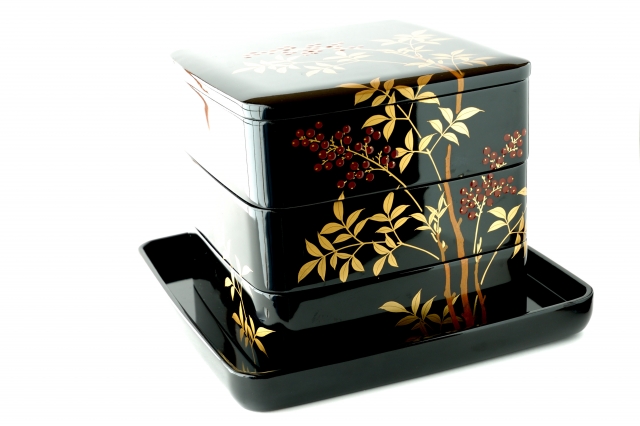
Lacquerware (urushi) is a Japanese handcraft that existed since thousand years ago until today. Using wood as the base and sap of the lacquer tree for coating the exterior.
This handicraft is known not only in Japan but also in China and Korea. The color use for the coating is usually black or red painted with gold color (Maki-e) for the decoration.
Lacquerware need to be handled by skilled artisan for it to be able to reach its perfection.
The Japanese government value and continue to preserve Lacquerware and hence listed it as a National Treasure of Japan. The historical items of lacquerware from Heian and Edo periods can be found at the Tokyo National Museum. Eating in lacquer bento box will give you a luxurious feeling.
Wooden
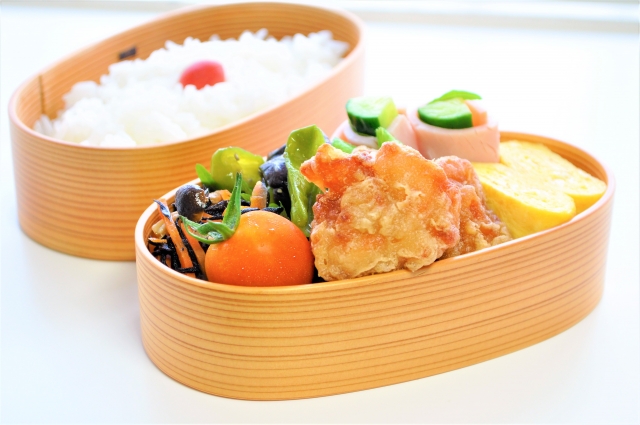
The most popular bento box handcraft is Magewappa bento box. Magewappa bento box is made from cedar wood.
The invention of Magewappa bento box begin 400 years ago in Tohoku region. Tohoku region is the mother of Japanese handcraft. Due to it abundant nature resources, almost all famous handcraft were born in this region.
The process of making Magewappa required a very skillful artisan to develop it. The tree were first cut into thin slices and then bend into an oval shape. The luxurious texture of wood can be seen from the bento box. This ecofriendly bento box will give moisture and keep the food fresh for the day. Very safe to use and free from chemical and plastic. You can eat bento with the peace of mind. Let’s give it a shot.
Bamboo
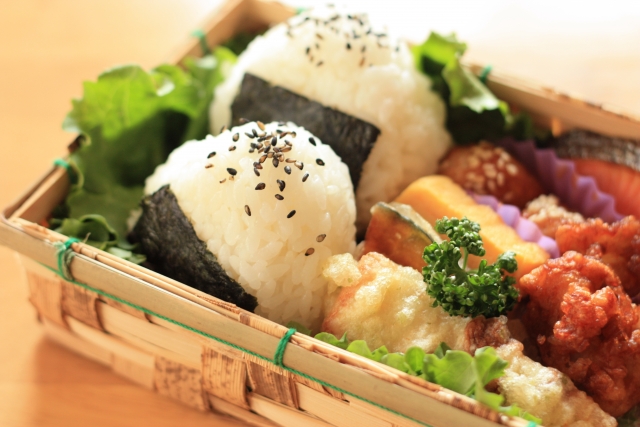
Bento made out from bamboo is rarely seen nowadays, but it do exist.
Bamboo is light and strong make it easy to bring it everywhere. This weaved bamboo is durable and leave it with a stunning looks.
This traditional bamboo bento is made based on Furiwake-Nimotsu (Bamboo basket) that was used as a bag during the Edo period for travelling.
Ceramic and Porcelain
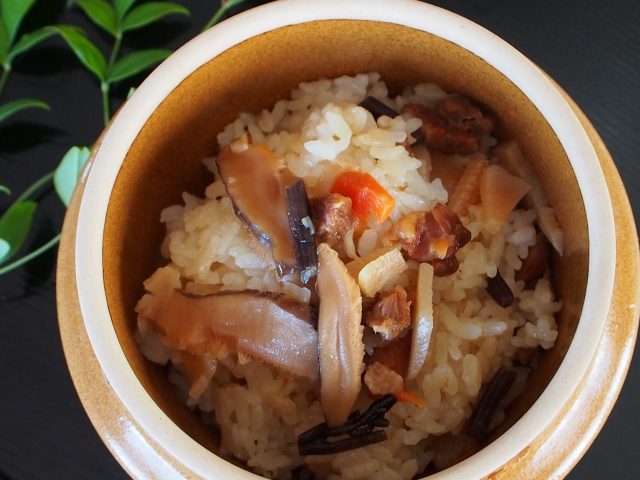
This bento box is very famous in Gunma Prefecture as an Eki ben namely as Kamameshi.
Kamameshi is made from ceramic and it is the only ceramic Eki ben that can be found in Japan.
Heavy and easily break which have abuse the definition of “convenience” of bento box. Therefore definitely not for school or even workplace.
It is unique only to Gunma as an Eki ben. so don’t forget to try it when you visit Gunma!
Materials and Designs The Cute, Minimalist and Urban Types
Steel

The most sturdy and durable bento. Easy to clean and well insulated.
It is popular among the working adult. It has a minimalist and sophisticated look. So stylish to bring to the office.
Plastic
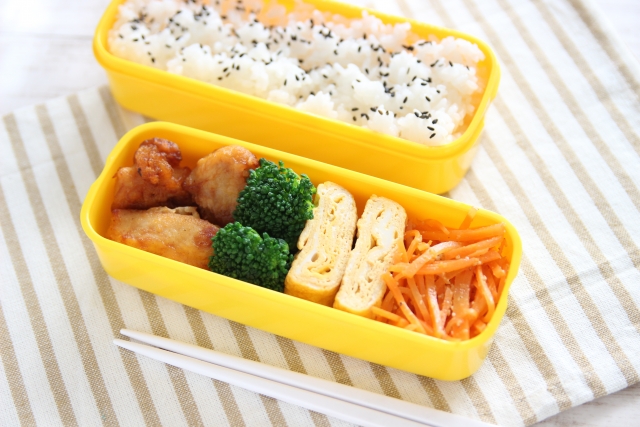
Plastic material bento is the most famous among all the bento users.
You can find it as cheapest 100 yen at Daiso and even ready made food from the convenience store. Available in many colors and shape which make it more desirable among the teenagers and children.
However, due to the chemical use from the plastic, some of the bento box is not BPA free and safe. Choosing the right bento box is very crucial to prevent the bento material suck in all the nutrient from our food.
Choosing the right Bento box
The current innovation of Bento box go to the extent of using combination of Plastic and Steel. The exterior is made of plastic so that it is microwave safe while the interior is made of steel so that food is insulated. Depending on the products some of the product work only work as an insulator not microwave safe. It is suggested to use the traditional eco-friendly bento box rather chemical or mixed material product. Just like the famous proverbial “You are what you eat”, in order to stay healthy and fit, be mindful of what we eat and the Bento box we choose to use.
Frequently Asked Questions
- What are popular Bento Box Dishes?
- The popular Bento box dishes are rice, umeboshi (pickled plum), salad, tamagoyaki (fried egg), agemono (deep fried food).
- Where to buy Bento boxes?
- Most of the Bento boxes can be found at mall or supermarket. However it is harder to find authentic Japanese bento box such as Magewappa. But don’t worry you can buy it with us. We do sell aunthentic Magewappa.

